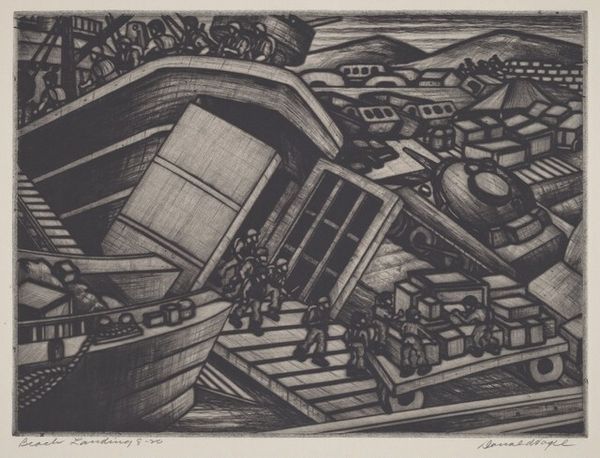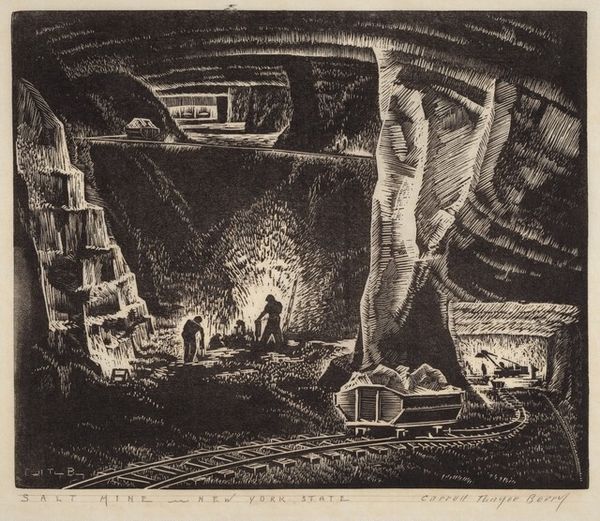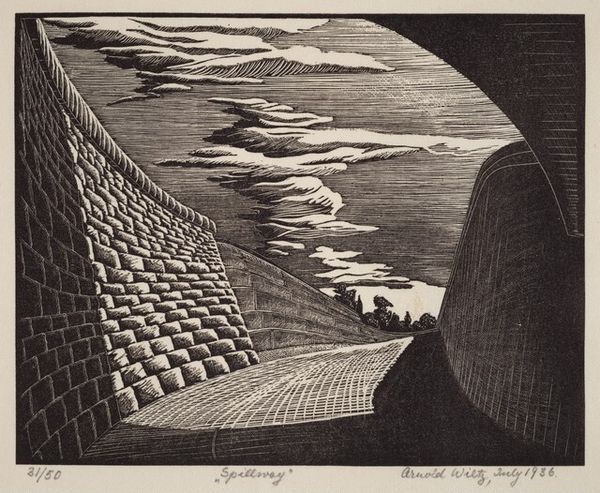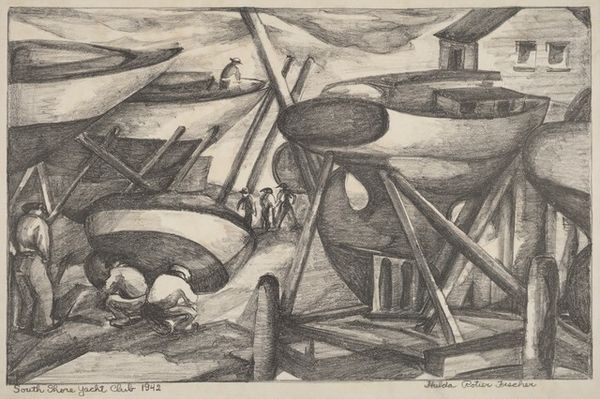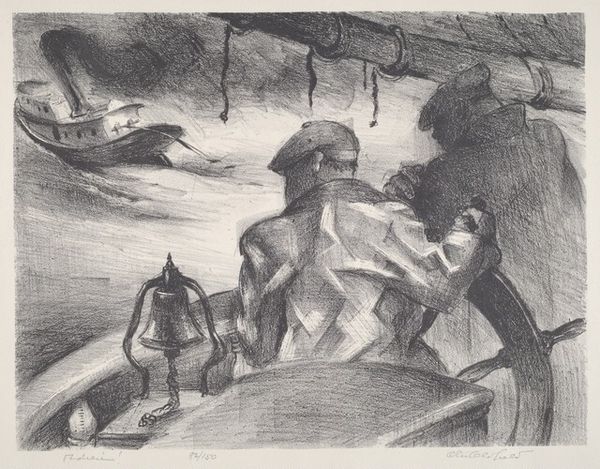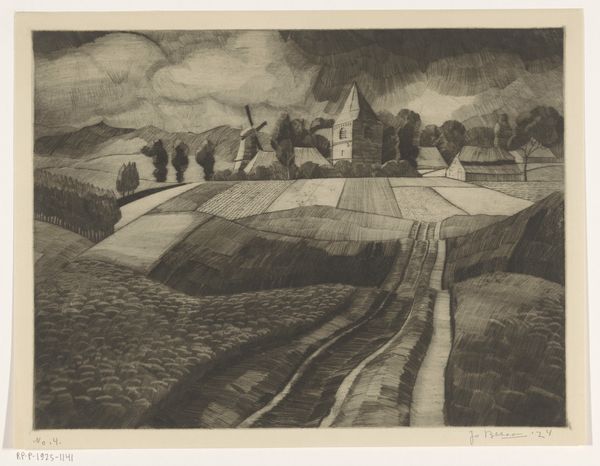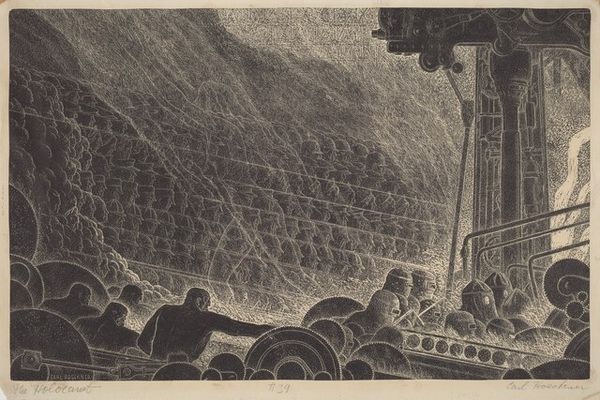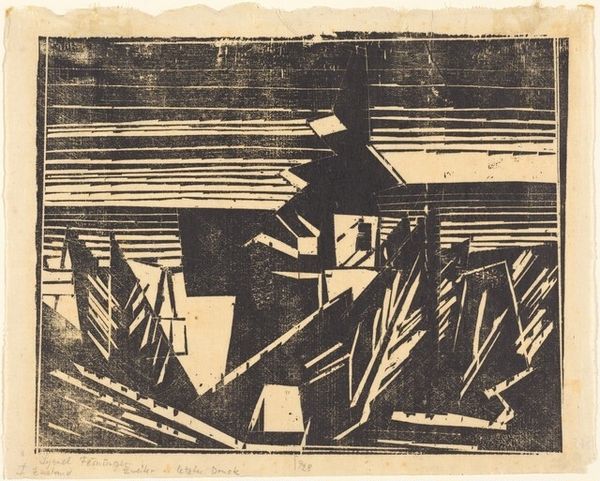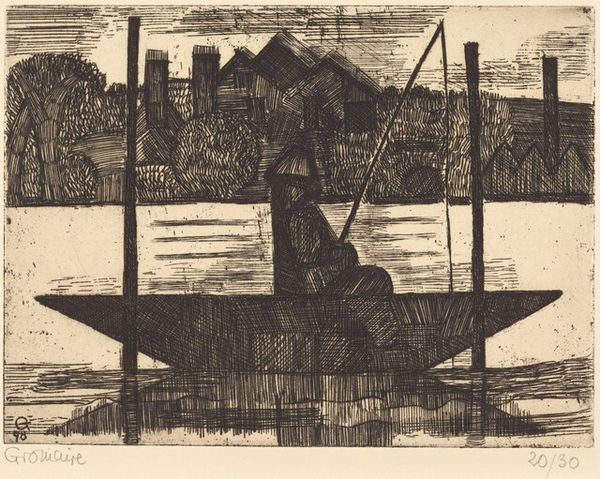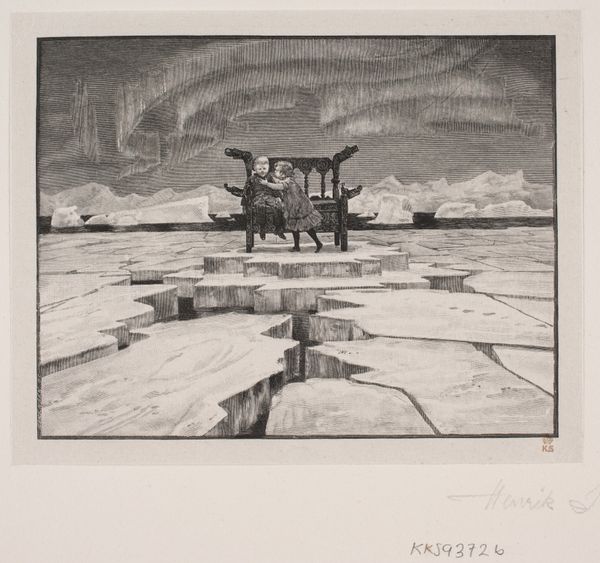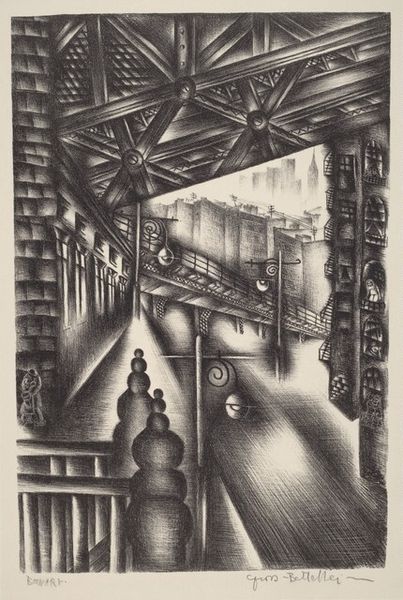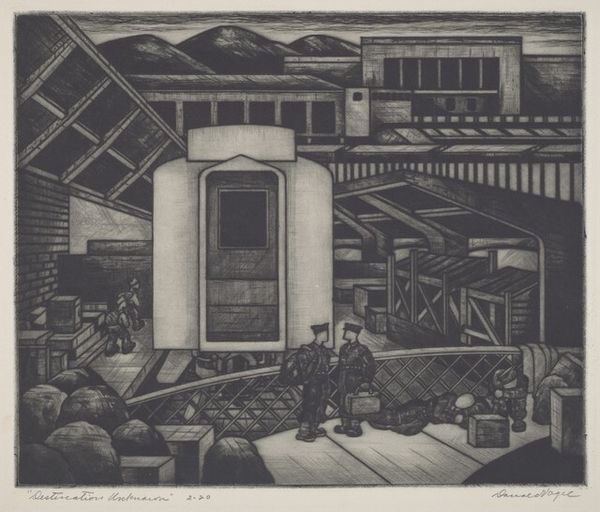
graphic-art, print
#
graphic-art
# print
#
social-realism
#
cityscape
#
realism
Dimensions: Image: 228 x 177 mm Plate: 175 x 225 mm Sheet: 235 x 292 mm
Copyright: National Gallery of Art: CC0 1.0
Curator: This compelling print before us, dating back to approximately 1943, is entitled "Swing Shift" by Donald Vogel. What captures your eye initially? Editor: It's intensely noir, isn’t it? All that deep shadow, and the heavy textures...it evokes such a palpable sense of working-class grit. There’s a haunting beauty within its darkness, wouldn't you agree? Curator: Absolutely. Vogel captures something essential here. During this time period, American Social Realism was very focused on depicting the daily lives of ordinary people. With this being made during World War II, it’s impossible not to think about labor, industry, and sacrifice. What is this labor doing? Editor: The print's monochromatic palette further underscores this seriousness of the work. I find myself looking at the depiction of the figures, drained and anonymous workers almost subsumed by their surroundings, who carry the weight of war efforts and the weight of the work itself on their backs. Their stooped posture, perhaps representative of this exhaustion. Curator: The industrial cityscape presses in, a kind of cage almost. There's an almost palpable claustrophobia communicated through the density of lines in the composition. Did you notice "Peerless Coal" stamped into the brick on one of the buildings? A brand that becomes the stage. Editor: Vogel makes striking commentary here! The term “swing shift” referred to those workers taking on alternative work times in a manufacturing setting. Peerless, though it refers to the brand of coal sold, seems ironically to suggest here that no shift, no amount of coal, is somehow more “worthy” than the people here, and that a life spent in work leaves people like these drained. Curator: It invites contemplation about exploitation and social issues. Its enduring power, though, also resides in the quiet dignity it affords its subjects, ordinary workers whose faces, despite their anonymity, nevertheless reveal determination. Editor: It definitely makes you consider how those narratives still resonate in our current labor landscape, especially in marginalized communities who may bear disproportionate impacts when war, labor and other cultural issues continue to place work ahead of wellbeing. This piece certainly evokes empathy while forcing self-reflection on our current status. Curator: It gives us pause to re-examine.
Comments
No comments
Be the first to comment and join the conversation on the ultimate creative platform.
